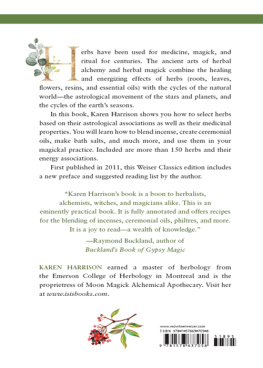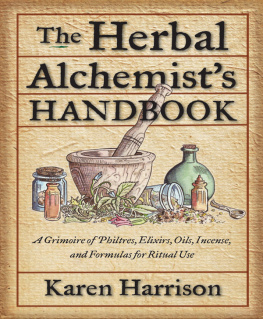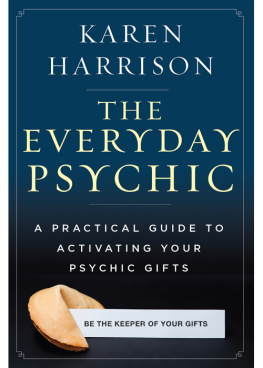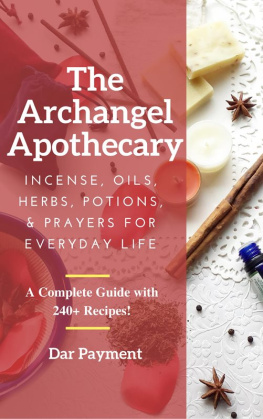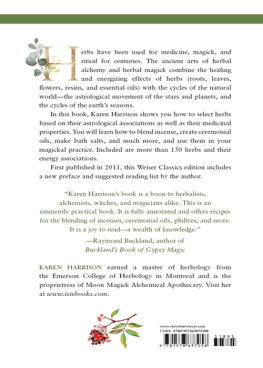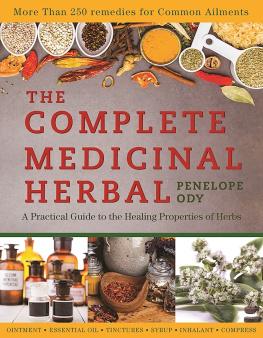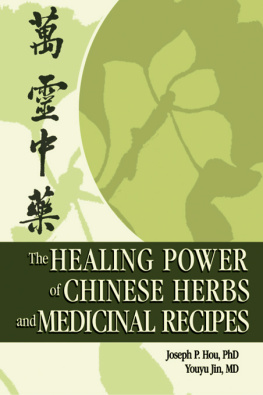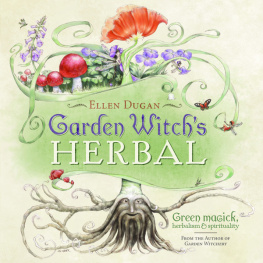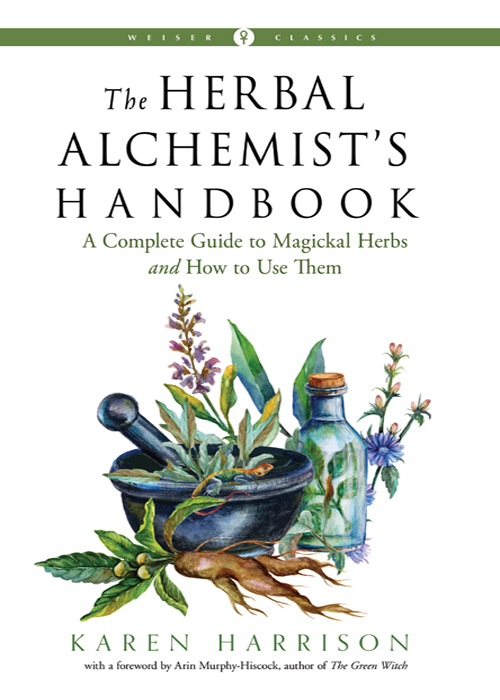

THE WEISER CLASSICS SERIES represents the full range of
subjects and genres that have been part of Weiser's publishing
program for over sixty years, from tarot, divination, and
magick to alchemy and esoteric philosophy. Drawing
on Weiser's extensive backlist, the series offers works by
renowned authors and spiritual teachers, foundational texts,
as well as introductory guides on an array of topics.
The HERBAL
ALCHEMIST'S
HANDBOOK
The HERBAL
ALCHEMIST'S
HANDBOOK
A Complete Guide to Magickal Herbs
and How to Use Them
Karen Harrison
Foreword by Arin Murphy-Hiscock

This edition first published in 2020 by Weiser Books, an imprint of
Red Wheel/Weiser, LLC
With offices at:
65 Parker Street, Suite 7
Newburyport, MA 01950
www.redwheelweiser.com
Copyright 2020 by Karen Harrison
Foreword copyright 2020 by Arin Murphy-Hiscock
All rights reserved. No part of this publication may be reproduced or
transmitted in any form or by any means, electronic or mechanical,
including photocopying, recording, or by any information storage
and retrieval system, without permission in writing from Red Wheel/Weiser,
LLC. Reviewers may quote brief passages. Previously published
in 2011 by Red Wheel/Weiser, ISBN: 978-1-57863-491-0.
ISBN: 978-1-57863-705-8
Library of Congress Cataloging-in-Publication Data available upon request.
Cover by Kathryn Sky-Peck and Kasandra Cook
Interior by Debby Dutton
Typeset in Brioso Pro
Printed in Canada
MAR
10 9 8 7 6 5 4 3 2 1
Series Editors
Mike Conlon, Production Director, Red Wheel/Weiser Books
Judika Illes, Editor-at-Large, Weiser Books
Peter Turner, Associate Publisher, Weiser Books
Series Design
Kathryn Sky-Peck, Creative Director, Red Wheel/Weiser
www.redwheelweiser.com/newsletter
Contents
PART 1
The Herbs and Their Planetary Signatures
PART 2
Practicum: The Creation, Composition, and Blending of Alchemical Herbal Formulas
PART 3
Combining the Planetary and Elemental Influences
Foreword
Lately, I've been doing a lot of thinking about what a modern practitioner's personal grimoire should include. Everyone's is different, of course, because our needs are unique, and it will include what is specific to your interests. Something we all include, however, is lore.
Lore is an aggregate of knowledge associated with something that we can use to interpret how people felt about that thing. It also allows us to transmit wisdom and information, providing a way of educating others. Lore finds its expression in superstition, old wives' tales, folklore, anecdotes, and mythology. Historical documents that tell us how practitioners used plants can also inform our modern approach in magical practice.
Immersing yourself in lore situates you within your field, giving you a sense of a larger community, a history that informs your modern practice. How people have previously approached a plant, how they interpreted its physical form, how they associated that with what it might be used forall this can support your personal interpretations of that plant's uses. It is a foundation upon which you can base your own experimentation.
Part of occult history is the study of alchemy, a field of natural philosophy with the goal of transforming matter. In that respect, it is concerned with purification and perfecting, stripping away the dross to refine the remaining matter into something as pure as possible. In the physical field of science, alchemy was a forerunner of chemistry. In esoteric fields, alchemy became the pursuit of personal spiritual perfection, the transformation of the dross of mundane self into a higher self. In this sense, the transmutation of lead into gold is symbolic, an allegory for the journey from ignorance to enlightenment.
With this understanding of alchemy we see how it is well suited to the study of magical herbalism. The life cycle of plantsfrom seed growing to plant with the application of light, water, and earth; then to harvest; then to magical ingredientcan be understood as an alchemical development from basic seed to spiritual application. The use of plants in magic is a means to create change, to transform a situation into something else, to draw specific energy toward a goal with the objective of altering it. More than that, magical herbalism is one of the ways through which we can work for self-transformation, the magical alchemy of using materials from the world around us to help us refine our spirits and achieve our highest possible spiritual state.
Karen Harrison's Herbal Alchemist's Handbook is a book you can grow with, as you develop your personal practice. It has several layers of depth, allowing beginners to access it while still useful to more advanced practitioners. It is a reference as well as a guide, a history lesson as well as a recipe book.
Karen's book is also an excellent way to dip your toes into incorporating astrological correspondences into your magical work. Not only does she offer ways to do it and the information to use as a foundation, but she also explains why you might want to do it and lists the benefits and bonuses of working with planetary energies in your practice of magical herbalism.
Planetary correspondences add a layer of complexity to working with herbs and plants. An examination of planetary energies allows you to learn about the sphere of influence of each planet and luminary, with an accompanying list of the plants classified under that planet's rule. Rituals associated with the planet's sphere of influence are provided to help you explore the energies connected to it. Likewise, if you are primarily an astrologer, this book offers you extrapolated information to incorporate herbal correspondences into your astrology practice.
The formulas section offers a variety of methods by which to explore the applications of magical herbalism. Recipes for oils, bath salts, philtres, elixirs, amulets, and incense allow you to experiment with different techniques to draw upon the properties of plants. The different methods are explored and explained, allowing you to learn new techniques as you expand your knowledge of magical herbalism. One of my favorite parts is Karen's lists suggesting combinations of herbs and other components such as stones to provide ideas for enhancing or focusing certain energies in magical work.
In short, if you are seeking self-transformation and refinement of the mundane self to achieve your highest spiritual potential through working with plants, this is an excellent book to have at hand.
Arin Murphy-Hiscock, author of The Green Witch
Preface
Since the age of four I have been fascinated with nature, herbs, and scents. As a child my initial interest was in communing with plant and nature spirits while picking herbs and flowers to dry to create simple potpourris. By the age of seven, I decided I would make the most amazing perfume in the world. So I gathered up all my mother's colognes and perfumes and mixed them into one big creation. As you can imagine my creation was an olfactory disaster and my mother was less than pleased. It was at that time that my grandmother, Ysleta, took me under her wing to show me how to really use herbs and scents, and I've never looked back.
Next page
